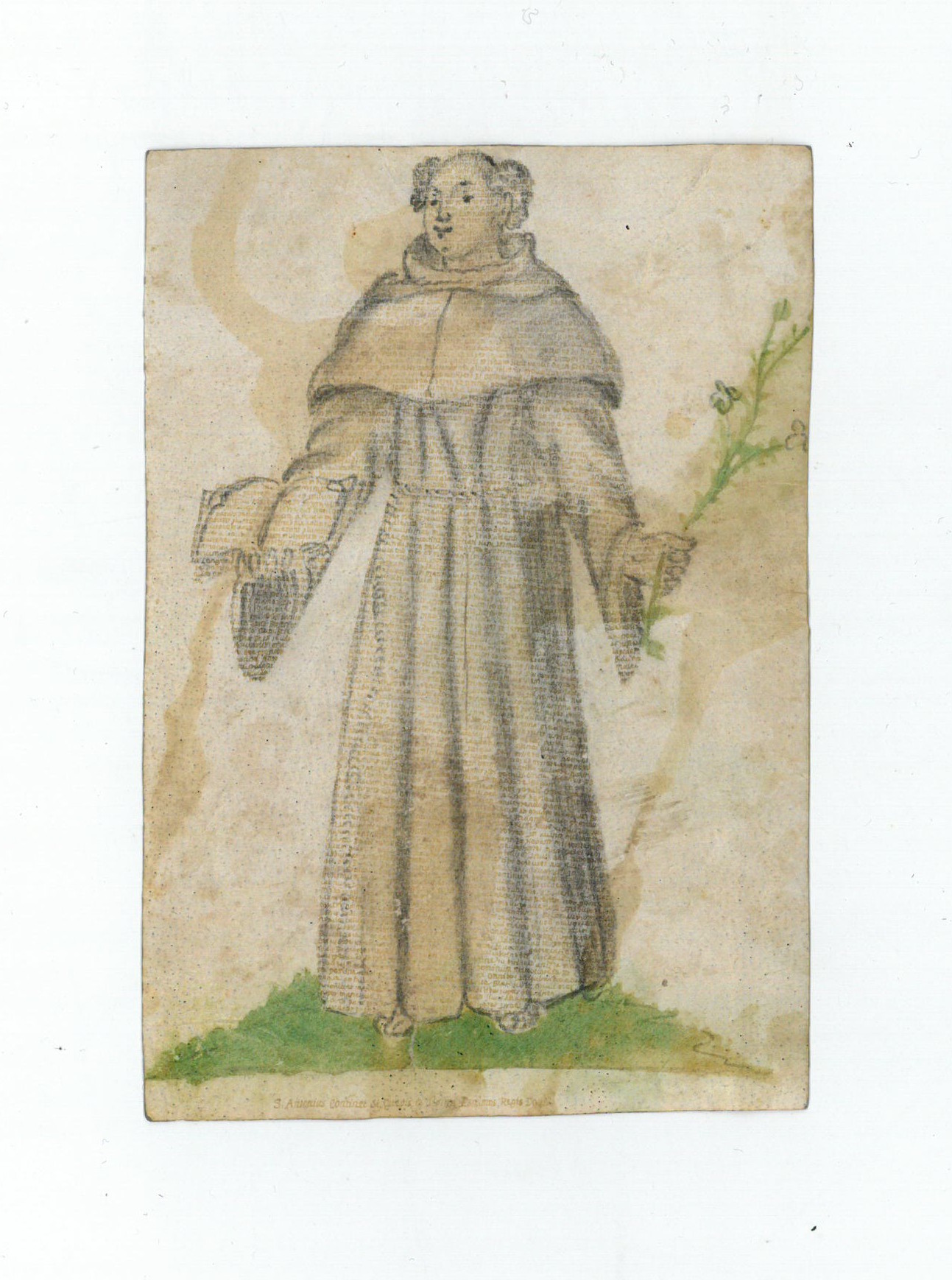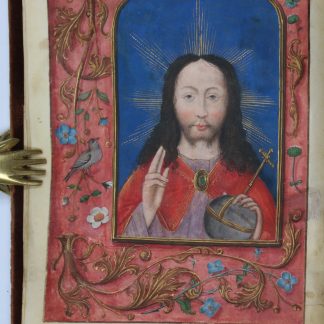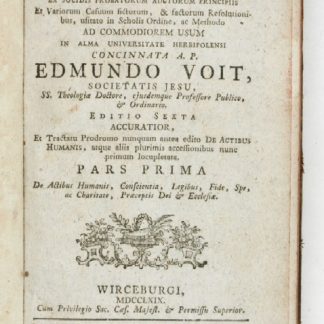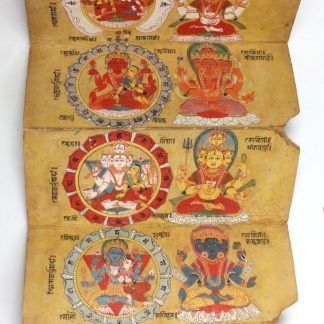S. Antonius continet si quæris.
113 x 77 mm. Brown ink, charcoal, and watercolour on vellum.
€ 4.800,00
What at first glance appears to be a conventional devotional image of Saint Anthony of Padua is actually composed of hundreds of microscopic words, forming both the image of the saint and martyr and the prayer "Si quæris miracula" ("If, then thou seekest miracles") from the "Officium rhythmicum s. Antonii" that is sung every Tuesday at the Basilica of Saint Anthony in Padua to this day.
The composition of images from text is an old calligraphic tradition dating back at least to the ancient Greek carmina figurata. Micrography is an art form first developed by Jewish scribes in Egypt and Israel around the ninth century as a way to circumvent the prohibition of figurative images in Judaism. In Europe, the earliest known micrographies can be attributed to calligraphers of the late 16th and early 17th century. Although micrographies were prized as artistic curiosities by often princely collectors, micrography would remain a very rare artistic practice that largely fell into oblivion with the general decline of calligraphy in Europe over the 18th century.
Considering that Saint Anthony's main attribute is the book of psalms that he always carried with him and that there is a popular motif of Saint Anthony reading, the micrographic representation is a particularly charming aspect of his iconography.
With an old waterstain and a pin hole slightly affecting the image.






